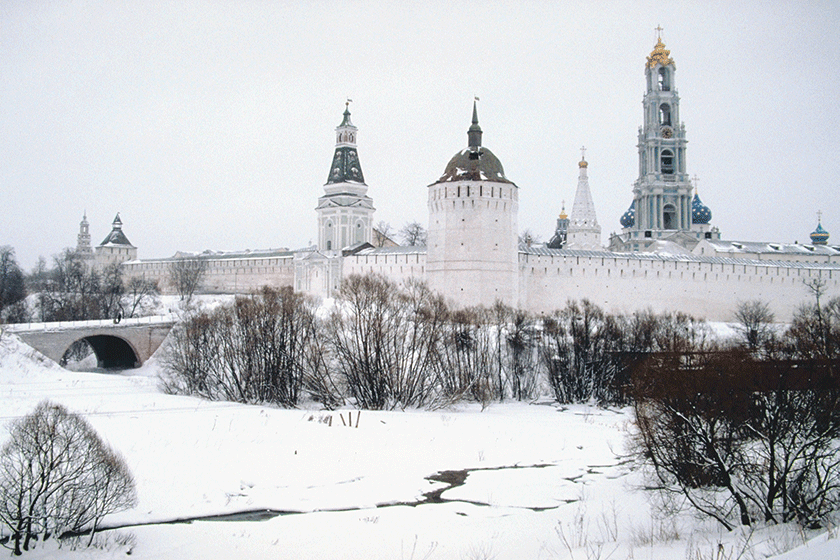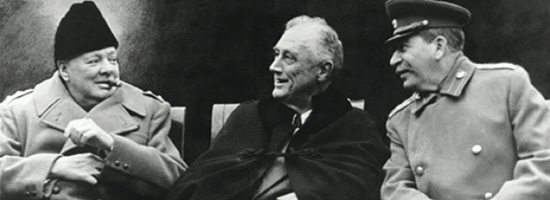The History of Loot and Stolen Art: An Excerpt
To Russia with loot...
This post may contain affiliate links. Learn more
Prompted by the story of a Romanian mother who claimed that she burned works by Monet, Picasso and Matisse in the oven to protect her art thief son, Ivan Lindsay looks back at one of history’s biggest looters, Stalin.
Interpol currently has over 40,000 artworks listed as stolen on its database. Select the top 50 from this list and you find masterpieces by Rembrandt, Rubens, Caravaggio, Vermeer, Picasso and Van Gogh. This group has been called ‘The Museum of the Missing’ and invites speculation as to where these paintings might be. Stalin removed much of Germany’s art collection as revenge for the 25 million Russians killed in WWII. This places him as one of history’s major art thieves, and yet few people have questioned how it came to pass. On the morning of 4 May, 1945, Victor Baldin, a young captain in the Societ Red Army’s 38th Field Engineers, received the order to occupy Karnzow castle near Kyritz. Having fought his way from Stalingrad to just north of Berlin, Baldin moved forward cautiously – his unit encountering isolated pockets of vigorous German defence.
The Wehrmacht, after their own brutal behaviour in Russia, knew that capture meant death or a life in a Siberian Gulag. One seasoned Alsatian veteran of the Grossdeutschland Division wrote, ‘We no longer fought for Hitler… or for the Third Reich, or even our fiancées or mothers. We fought for simple fear… for ourselves, so that we wouldn’t die in holes filled with mud and snow; we fought like rats.’
Baldin said later that he found the castle, a fine chateau surrounded by woods, deserted except for the mistress of the owner. She had made a double suicide pact with her lover, Count Königsmark, and the two of them had rowed out into the middle of the adjacent Lake Obersee. The Count drowned, but his mistress, obviously less keen on the idea, survived.
Baldin’s unit occupied the castle. Whilst searching the cellars, they stumbled across the art collection of the Kunsthalle in Bremen, which had been hidden there by the retreating Nazis. There were 50 paintings, 1,715 drawings and more than 3,000 prints. Instead of following Soviet military protocol and alerting his superior officer to contact one of the specialist Trophy Brigades, Baldin and his unit decided to loot the collection themselves.
As the Soviet army advanced towards Berlin, Hitler gave the order that all of the art that Germany had stolen from across Europe (estimated as 20 per cent of Europe’s artworks by the US-appointed SafeHaven Committee in 1945), should be hidden in designated storage areas such as mines and castles. The Nazis hid their gold and the contents of their own museums. When the Soviets started finding these art-filled bunkers, Stalin gave an order for everything to be removed to Russia and equipped special Trophy Brigades to organise it.
Baldin kept 362 drawings for himself, including works by Corot, Delacroix, Degas, Dürer, Van Gogh, Goya, Manet, Rembrandt, Raphael, Rubens, Rodin, Toulouse Lautrec and Titian. He said the troops ‘decorated their trucks with nudes by Tiepolo, Rodin and other masters’ and that he further enhanced his collection by trading wristwatches and belts for drawings. He sacrificed ‘a really good pair of boots’ for Albrecht Dürer’s Salvator Mundi.
As the unit scattered across Russia on demobilisation, the artworks were dispersed. Baldin hid his collection at home before giving
it to the Shusev State Scientific Research Museum where he worked. This part of the collection is now referred to as the Baldin ensemble and was moved to the Hermitage museum in St Petersburg in 1991, where it remains. Bremen estimates that there are another 150–200 of their drawings split between the Hermitage and the Pushkin Museum in Moscow, where they have been openly exhibited since the 1990s.

The only part of the collection to have returned to Bremen was a group of 46 drawings and 56 prints found by the art historians Konstantin Akinsha and Grigorii Kozlov. In March 1993, they were invited to a small flat in a Russian provincial city. From under his bed, an old man produced an album and started flicking through drawings. ‘I like this Watteau very much,’ he said, and ‘this Rembrandt isn’t bad, either.’ The masterpiece from this group was Dürer’s View of a Rock Castle Beside a River of 1494.
Akinsha and Kozlov deposited the works in the German Embassy in Moscow, where they remained for several years until the Russian government exchanged them with the German government for two of the original panels from the Amber Room in Catherine’s Palace of Tsarskoye Selo that had resurfaced in Germany.
Baldin himself tirelessly campaigned to have the Soviet government return the drawings he had stolen by writing to Soviet leaders from Brezhnev onwards. In 1987, Baldin visited Bremen and told them exactly which of their drawings were in the Hermitage. However, the Culture Minister in the mid 1990s, Alexander Sokolov, said in 1995 that any talk of their return had been ‘premature’.
Bremen’s problems form part of the much larger question of what will happen to all the looted artworks in Russia. It is estimated that Russia took around three million pieces, of which they returned only half in the 1950s to museums in areas under their control, such as East Germany (including Dresden’s fine collection), Romania and Poland.
The 1.5 million looted artworks remaining in Russia are spread between major museums such as the Hermitage and the Pushkin, minor museums, and various designated areas, including monasteries and mines known as Trophy deposits, the best known of which is the Trinity-Saint Sergius Monastery in Zagorsk. For many years, the curators at the major Russian museums could not afford the train tickets to visit the more remote deposits, and even today some of the items have reputedly never been unpacked from their WWII boxes.
Although Russian presidents such as Boris Yeltsin, Mikhail Gorbachev and even Vladimir Putin have all hinted that some returns might be possible, it seems clear that Russia, more belligerent in recent years, as her confidence has increased in line with strong prices for her natural resources, has no intention of returning anything. From 1945 to 1991, Russia denied it had any trophy art. In the mid- 1990s, it admitted its existence and started exhibiting it before passing a law in the Duma in 2000 that states that all artworks in Russian museums belong to Russia. It differentiates between private looting (like Baldin’s) and legal trophies taken with military sanction (the Trophy Brigades and most of the WWII looted art). This law elaborates by saying that Russia didn’t start the war and it views the Trophy Art it rescued as compensation for the 25 million people it lost during the war. In this way, it turns a weak legal position into a strong emotional one that Germany finds difficult to confront.
It is true that the Allies agreed at the Yalta Conference in 1945 that the Russians could have $10bn compensation from the Germans for their losses. However, it was contingent on the Russians detailing what they had already removed from Germany, a stipulation that they refused to comply with. In addition, the Allies never ratified the agreement, and the Russians never signed a proper peace treaty with Germany, because relations broke down between all parties shortly after the war.

The leading Russian museums, the Pushkin and the Hermitage, have been constructed out of looted collections. The core collections were confiscated in 1918 from the Royal Collection of the Tsars and other leading Russian aristocrats such as the Demidovs, Vorontsovs and Sheremetevs. The Impressionist and post-Impressionist collections of the mercantile collectors Schukin and Morozov provide the basis for their later holdings. The Trophy Art acquired in WWII has added to every department of the museums as well as decorating countless government buildings, hospitals and sanatoriums.
What is certain is that Russia still has at least 1,500,000 art objects looted from Germany after the war, a subject that has hung like a black cloud over Russo-German relations ever since. Looting 3 million art objects makes Stalin one of the major art thieves of all time, although he had strong competition from the likes of Alexander the Great, Napoleon and Hitler. Perhaps the final word on the current Russian situation should go to an elderly WWII veteran of the Red Army, who said in 1995, ‘I don’t think Russia should return art booty to Germany. We suffered a lot from the war, and those treasures should be viewed as a partial compensation for the damage and sufferings.’
This excerpt was adapted from The History of Loot and Stolen Art by Ivan Lindsay.
